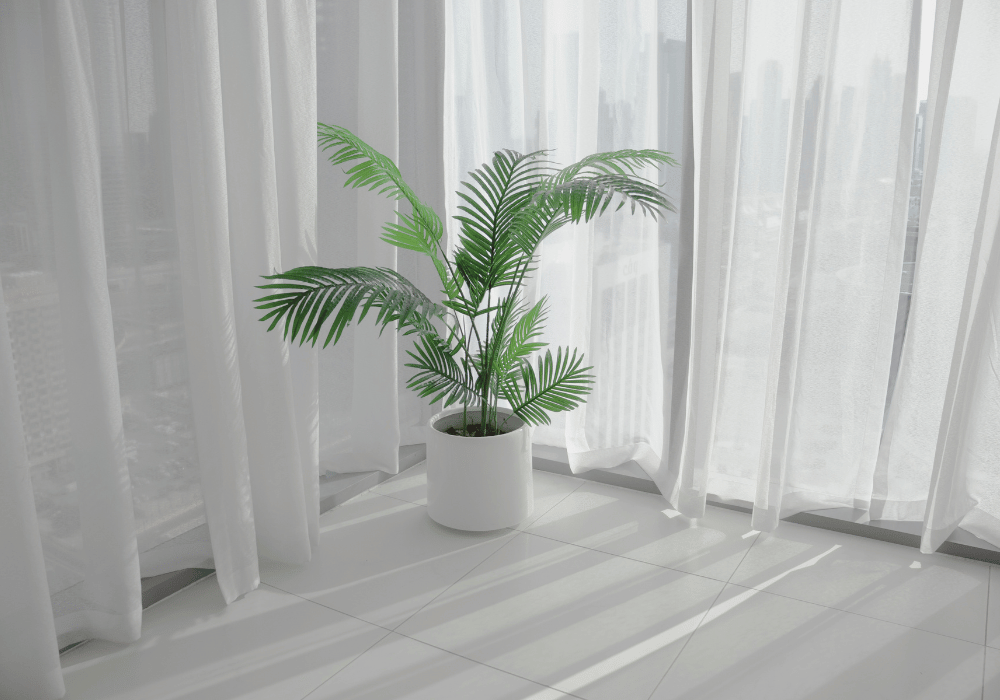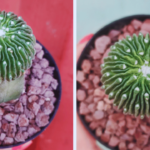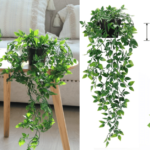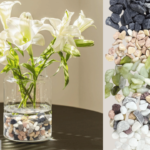The Areca Palm, scientifically known as Dypsis lutescens, is a tropical beauty you can nurture in your home or garden. Its arching, feathery fronds bring a breezy, exotic ambiance, instantly transforming any space into a verdant retreat. Beyond looks, this plant serves as a natural air purifier—removing toxins like formaldehyde and benzene—making it a popular choice for improving indoor air quality and overall well-being.
What makes the Areca Palm such a superstar? Let’s break it down:
- Visual Appeal: Its bright green, feathery fronds create a lush canopy that catches the eye without overwhelming a room.
- Air-Purifying Power: NASA studies rank it among the top houseplants for filtering indoor pollutants, contributing to a healthier environment.
- Ease of Care: While many palms can be finicky, the Areca tolerates a range of light conditions and doesn’t demand constant pampering.
- Versatility: Whether potted indoors or planted outdoors in warm climates, it thrives equally well—adding tropical flair to patios, living rooms, or office spaces.
Imagine walking into your living room and being greeted by the gentle sway of palm fronds. That sense of calm and connection to nature is exactly what the Areca Palm delivers, making it an ideal companion for both novice plant parents and seasoned green thumbs alike. As we dive deeper into its history, care requirements, and creative uses, you’ll discover why this palm is more than just a decorative accent—it’s a living, breathing asset for any space.
History and Origin

To truly appreciate the Areca Palm, it helps to understand its botanical and cultural roots. Native to the rainforests of Madagascar, Dypsis lutescens evolved under a dense canopy, adapted to filtered sunlight and high humidity. The palm forms dense clusters in these tropical jungles, reaching impressive heights of up to 30 feet in the wild. The slender, golden-yellow stems and lush green fronds made it a standout species long before it became an indoor icon.
Native Habitat
- Climate: Warm, humid, consistent temperatures between 70°F–85°F (21°C–29°C).
- Light: Dappled sunlight beneath larger trees—never harsh midday rays.
- Soil: Rich, well-draining soil high in organic matter.
In Madagascar’s understory, the Areca Palm’s natural environment offered both protection and competition. Nutrient-rich leaf litter, regular rainfall, and ideal humidity created a perfect growth medium. This background explains why, today, the palm craves similar conditions in our homes and gardens.
Cultural Significance
While most indoor growers appreciate the Areca Palm for aesthetics and air-purification, its cultural roles run deep:
- Areca Nut Traditions: Although Dypsis lutescens is not the primary source of areca nuts, related palms in Southeast Asia yield the betel nut—an important ceremonial and social stimulant.
- Symbolism: In many tropical regions, palms symbolize victory, peace, and eternal life. You’ll find them decorating temples, weddings, and festive events.
By bringing an Areca Palm into your space, you connect with centuries of human-plant interactions, from sacred rituals to everyday beautification. It’s not just a plant—it’s a living symbol of tropical heritage and a testament to humanity’s enduring bond with nature.
Characteristics and Identification
Identifying an Areca Palm is straightforward once you know what to look for. Unlike fan palms with broad, segmented leaves, the Areca sports pinnate (feather-like) fronds. Each frond consists of multiple narrow leaflets—around 30–40 of them—arranged symmetrically on either side of a central rachis. A mature frond can span 4–6 feet in length, creating a graceful, arching silhouette.
Physical Appearance
- Trunk: Multiple slender, golden stems emerge in a clumping habit—never solitary. Over time, those stems can form a dense, elegant cluster.
- Fronds: Soft, arching, bright green, with leaflets that may droop slightly at the tips.
- Height: Indoors, expect 6–8 feet; outdoors in ideal climates, up to 20–30 feet.
Leaf Structure and Growth Patterns

New fronds emerge as tight, pale-green cylinders that gradually unfurl. Growth is continuous during warm months, slowing but not halting entirely in winter. With each new frond, the plant’s canopy becomes fuller, offering more lush coverage.
Common Varieties
- Golden Areca: Distinguished by yellowish stems—adds a pop of color.
- Variegated Areca: Cream-striped leaflets—brings textural contrast.
- Compact Cultivar: Slower growing, ideal for smaller spaces.
Spotting these details ensures you get the genuine Dypsis lutescens experience—not a look-alike or inferior variety. Once you recognize its signature featherleaf fronds and clustered golden stems, you’ll easily differentiate it from similar palms like the Kentia or Bamboo Palm.
Growing Areca Palm Indoors
Cultivating Areca Palms indoors is both rewarding and surprisingly straightforward—provided you meet their basic requirements.
Light Requirements
Bright, indirect light is the sweet spot. Direct midday sun through glass can scorch fronds, while low light leads to sparse, leggy growth. Aim for:
- East/West-facing windows: Provides gentle morning or late-afternoon sun.
- Filtered South windows: Use sheer curtains to diffuse intense rays.
- Artificial lighting: In darker rooms, supplement with full-spectrum grow lights positioned 1–2 feet above the canopy for 10–12 hours daily.
Temperature and Humidity
Areca Palms are tropical at heart, craving:
- Temperature: Steady 65°F–75°F (18°C–24°C). Avoid dips below 60°F (15°C).
- Humidity: Ideally 50–60%. Solutions include:
- Pebble trays: Fill a shallow tray with water and place the pot atop pebbles—evaporation boosts ambient moisture.
- Humidifiers: Especially in winter when indoor air becomes arid.
- Regular misting: Lightly spray fronds 2–3 times a week.
Soil and Potting Mix
A custom blend ensures both moisture retention and drainage:
- Ingredients: Peat moss or coconut coir + perlite/coarse sand + a handful of compost.
- pH: Slightly acidic to neutral (6.0–7.0).
- Pot choice: Terracotta or ceramic with drainage holes; saucer to catch excess water.
Watering Schedule
Overwatering leads to root rot; underwatering causes frond browning. Stick to:
- Summer: Water when top 1″ of soil is dry—typically weekly.
- Winter: Reduce to every 10–14 days; always check soil moisture first.
Fertilization Tips
During active growth (spring–early fall):
- Type: Balanced 10-10-10 slow-release or water-soluble palm fertilizer.
- Frequency: Monthly applications.
- Warning: Avoid high-nitrogen formulas—can burn roots if overapplied.
With this regimen, your indoor Areca Palm will reward you with vigorous, lush growth—becoming the verdant focal point of your space.
Outdoor Cultivation

In USDA zones 10–12, Areca Palms thrive as majestic outdoor specimens. If you live in a suitable climate, here’s how to plant and maintain them.
Suitable Climate Zones
- Temperature: Never below 35°F (2°C); ideal range 65°F–85°F (18°C–29°C).
- Humidity: High humidity zones, coastal areas, sheltered inland microclimates.
Planting Techniques
- Site selection: Partial shade under taller trees or along a patio edge.
- Soil preparation: Amend native soil with compost or well-rotted manure to enhance fertility and drainage.
- Hole dimensions: Twice the width of the root ball; depth matching the pot’s height to keep the crown slightly above ground.
- Planting: Center the palm, backfill gently, water deeply, and mulch with organic material to retain moisture and suppress weeds.
Landscaping Ideas
- Informal Hedge: Plant 3–5 feet apart to create a semi-opaque screen.
- Accent Plant: Use as a single focal point near entryways or poolside.
- Mixed Border: Combine with flowering shrubs (hibiscus, bougainvillea) and groundcovers (ferns, bromeliads) for layered interest.
Regular watering during establishment (first 6–12 months) is crucial—after which the palm becomes moderately drought tolerant. A yearly application of slow-release fertilizer keeps it robust and pest-resistant.
Common Pests and Diseases
Even hardy palms face threats from pests and pathogens. Proactive monitoring and prompt treatment safeguard your green investment.
Spider Mites
- Signs: Fine webbing, yellow stippling on fronds.
- Treatment: Increase humidity; spray affected areas with insecticidal soap or neem oil.
- Prevention: Regular misting and wiping fronds keep mites at bay.
Mealybugs
- Signs: White cottony masses in leaf axils and stem joints.
- Treatment: Dab bugs with cotton swabs dipped in isopropyl alcohol; follow up with horticultural oil.
- Prevention: Quarantine new plants; inspect monthly.
Scale Insects
- Signs: Hard, shell-like bumps on stems and undersides of leaves.
- Treatment: Gently scrape off scales, then treat with systemic insecticide if infestation is severe.
- Prevention: Maintain plant vigor; avoid overfertilization that attracts scale.
Fungal Infections & Root Rot
- Causes: Overwatering and poor drainage.
- Signs: Yellowing fronds, mushy crown, foul soil odor.
- Treatment: Repot in fresh, well-draining mix; trim affected roots; reduce watering frequency.
- Prevention: Use pots with drainage holes; never let the palm sit in water.
Healthy cultural practices—correct watering, adequate light, and good air circulation—are your best defense against most issues.
Propagation Methods
Want to share this lush beauty? Propagation can be done via seeds or division.
Seed Propagation
- Seed sourcing: Purchase fresh, viable Areca seeds.
- Preparation: Soak seeds 24–48 hours in warm water to soften the husk.
- Planting: Sow seeds ½″ deep in a warm, moist medium (peat-perlite mix).
- Conditions: Maintain 85°F–90°F (29°C–32°C) with high humidity; germination takes 60–90 days.
- Care: Keep medium consistently moist but not waterlogged; transplant seedlings once true leaves appear.
Division and Transplanting
- Timing: Best in spring or early summer.
- Process:
- Gently remove the palm from its pot or ground.
- Identify natural clumps or offshoots with healthy roots.
- Use a clean, sharp spade to separate divisions—each with its own root system.
- Replanting:
- Place each division into its own container or planting hole.
- Water thoroughly and keep shaded for several weeks until established.
Division yields faster, mature-sized plants compared to seed propagation, which requires patience and space.
Benefits of Areca Palm
The Areca Palm isn’t just a pretty face; it delivers tangible health and lifestyle perks.
Air Purification
- Toxin Removal: Filters volatile organic compounds (VOCs) like formaldehyde, benzene, and trichloroethylene.
- Oxygen Production: Boosts nighttime oxygen levels—ideal for bedrooms.
Health and Well-Being
- Stress Reduction: Studies show that interacting with indoor plants lowers cortisol levels.
- Productivity Boost: Greenery in workspaces enhances focus and creativity.
- Humidity Regulation: Releases moisture, reducing dry skin and respiratory irritation.
Aesthetic Appeal
- Versatile Décor: Complements minimalist, bohemian, or coastal styles.
- Visual Height: Adds vertical interest—perfect for corners or beside furniture.
- Texture Contrast: Feathery fronds contrast with broad-leaf plants, creating dynamic displays.
Whether placed in a living room, office, or outdoor patio, the Areca Palm enriches both form and function in any environment.
Troubleshooting Common Issues
Even with ideal care, occasional hiccups may arise. Here’s how to diagnose and correct them.
Yellowing Leaves
- Overwatering: Check for soggy soil; reduce watering frequency and improve drainage.
- Underwatering: Dry, crumbly soil indicates thirsty roots; water more evenly.
- Nutrient Deficiency: Pale fronds with green veins suggest iron deficiency—apply chelated iron.
Brown Tips
- Low Humidity: Increase misting, use humidifier or pebble tray.
- Chemical Build-Up: Fluoride/chlorine in tap water can burn tips—use filtered or distilled water.
- Salt Accumulation: Flush soil periodically to leach excess salts.
Stunted Growth
- Root-Bound: Inspect roots—if circling, repot into a slightly larger container.
- Light Shortage: Move to brighter spot or add supplemental lighting.
- Poor Nutrition: Apply balanced palm fertilizer per label instructions.
By tackling problems early and adjusting cultural conditions, your Areca Palm will bounce back quickly, ensuring continued lush growth.
Seasonal Care Guide
Areca Palms benefit from season-specific tweaks to keep them thriving year-round.
Spring Revival
- Pruning: Remove dead or yellowing fronds to encourage new growth.
- Repotting: If root-bound, upgrade to a slightly larger pot with fresh mix.
- Feeding: Begin monthly fertilization with balanced formula.
Summer Maintenance
- Watering: Increase frequency as growth accelerates—monitor soil moisture.
- Pest Check: Warm weather can spur spider mites; inspect and treat as needed.
- Cleaning: Rinse fronds outdoors or in the shower to remove dust and insects.
Autumn Prep
- Fertilizer Reduction: Scale back to every 6–8 weeks as growth slows.
- Light Adjustment: As daylight wanes, move closer to windows if indoor.
- Humidity Boost: Use pebble trays or humidifier as indoor heating begins.
Winter Protection
- Draft Avoidance: Keep palms away from cold windows and heating vents.
- Watering Cutback: Let soil dry slightly between waterings to prevent rot.
- Humidity Monitoring: Maintain at least 40% humidity to prevent brown tips.
Tailoring care to each season ensures your Areca Palm adapts smoothly, maintaining vigor and lushness throughout the year.
Design and Décor Tips
Incorporating an Areca Palm into your décor can elevate any interior or landscape.
Pairing with Other Plants
- Textural Contrast: Combine with broad-leaf plants like Monstera or fiddle-leaf figs.
- Height Variation: Place shorter groundcovers (e.g., Pothos, Calathea) around its base for layered appeal.
- Color Harmony: Pair with plants that have complementary foliage tones—silver, dark green, or variegated leaves.
Pot Styles and Materials
- Terracotta: Classic, breathable, and adds earthy warmth.
- Ceramic/Glazed: Sleek, modern look; available in myriad colors.
- Wicker/Baskets: Bohemian vibe—ensure a plastic liner to catch moisture.
- Metal Planters: Industrial aesthetic; watch for heat buildup in direct sun.
Placement Strategies
- Focal Point: Stand alone in an entryway or beside a sofa.
- Clustered Grouping: Combine several in varying pot sizes for a tropical corner.
- Hanging Displays: Use smaller offsets in hanging planters at different heights.
With a thoughtful approach to pairing, pot selection, and placement, the Areca Palm becomes more than a plant—it becomes an integral element of your design vision.
Cost and Availability
Getting your hands on an Areca Palm and budgeting for its care is straightforward.
Where to Buy
- Local Nurseries/Garden Centers: Inspect before purchase—look for healthy, pest-free specimens.
- Online Retailers: Convenient, but ensure reliable shipping and proper packaging.
- Big-Box Stores: Often more affordable; inspect closely for signs of stress or pests.
Price Range
- Small Specimens (6″–8″ pots): $20–$30 USD.
- Medium Specimens (10″–12″ pots): $40–$60 USD.
- Large Specimens (18″+ pots): $100–$200 USD and up, depending on height and fullness.
Ongoing Costs
- Soil & Fertilizer: Moderate—annual potting mix and monthly fertilizer during growth season.
- Humidity Aids: Pebble trays are one-time purchases; humidifiers range $30–$100.
- Pest Treatments: Occasional neem oil or insecticidal soap—budget $10–$20 per year.
Considering its longevity and low maintenance, the Areca Palm offers excellent value over many years of enjoyment.
Sustainable Practices
Caring for your Areca Palm responsibly helps the planet—here’s how to adopt eco-friendly habits.
Eco-Friendly Soil
- Peat Alternatives: Choose coconut coir, a renewable by-product of the coconut industry.
- Organic Amendments: Compost, worm castings, and aged manure boost fertility without chemicals.
Water Conservation
- Rainwater Harvesting: Collect roof runoff in barrels; use for watering to reduce tap-water use.
- Drip Irrigation: Automate watering with minimal waste, especially outdoors.
- Greywater: Reuse clean sink or shower water—avoid harmful detergents.
Waste Reduction
- Propagate & Share: Divide and gift offsets instead of buying new.
- Recycle Pots: Reuse plastic nursery pots or upcycle containers.
- Compost Clippings: Turn pruned fronds into garden mulch.
By integrating these practices, your palm-care routine becomes a model of sustainability that benefits both plant and planet.
Conclusion
The Areca Palm stands as a testament to nature’s elegance and resilience. From its origins in Madagascar’s rainforests to your living room or garden, this palm brings more than decoration—it delivers cleaner air, enhanced well-being, and a slice of tropical paradise. Whether you’re a budding plant enthusiast or a seasoned gardener, mastering its care routine—from light and water to pest prevention and design integration—ensures your Areca Palm remains vibrant and lush for years to come. Embrace the journey, and let this graceful green companion transform your space and uplift your spirits.
FAQs
1. How often should I prune my Areca Palm?
Prune sparingly—remove only fully yellow or brown fronds as they appear, typically 2–4 times per year. Excessive pruning can slow growth.
2. Can I overwinter my Areca Palm outdoors in mild climates?
Only if nighttime lows stay above 55°F (13°C). Otherwise, move it indoors or to a sheltered greenhouse to prevent cold damage.
3. What’s the best way to propagate multiple palms from one plant?
Division is fastest: separate clumps with healthy roots in spring, then repot each division in fresh, well-draining mix.
4. My fronds are drooping, but soil is moist—what’s wrong?
Drooping despite adequate moisture often indicates low light or temperature stress. Move the palm to a brighter, warmer spot.
5. Is tap water harmful to my Areca Palm?
Tap water with high fluoride or chlorine can cause leaf tip browning. Use filtered, distilled, or rainwater when possible.







